|
Artist's Statement
... the object / subject.
... about my relationship to objects / subjects (models), my approach towards a specific object / subject (model) and my ideas of how to transpose a particular real object / subject (model) into an artistic form.
|
|
|
|
What makes any given object exceptional for me and therefore indispensable for an artistic representation? What qualifications are required and what prerequisites must be fulfilled by an object to make it stand out from the chaotic flood of pictures which surrounds me, and that it achieves such importance to make its translation into an artistic form necessary for me? What criteria dictate my choice?
Creating order within myself, regularly composing my most inner life, self-analytical observing and releasing myself as much as possible from nervousness permit me to remain open towards the exterior. My own recognition and acceptance of my deepest wishes, desires, anxieties, dreams, memories, ambitions, possibilities, incapacities ... save me from drowning in the abundance of visual information, optical thrills and stimuli.
Concentration and self-discipline guide me inevitably towards a rigorous, strict and precise selection of motifs. Market-oriented restrictions can't play any role in my choice of motifs; on the contrary: I try to exhaust my inner richness to its fullest.
Out of the stormy ocean of images available, I basically make a choice which has its roots within the depths of my own universe. Consequently, the chosen objects acquire, in their pictorial transformation, a new and multifarious meaning and importance through the extraction of the impression the object has made on me, the overlap of the idea I myself have of the object and the object itself and the rendition of the object through my vision.
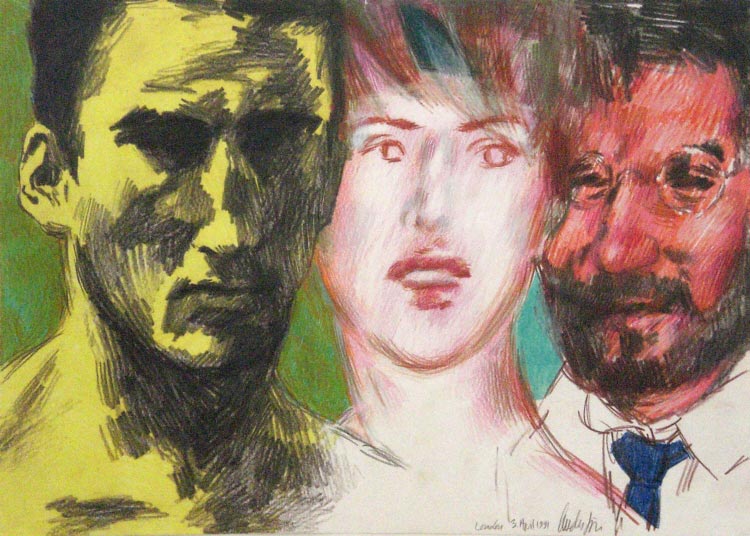
The object chosen for a rendition does not necessarily have a direct and straightforward relation to past actions and activities, moments of happiness ... therefore, the most time-consuming as well as the emotionally most exhausting phase in the working process is the finding and choosing of the right object.
The idea of the unreproduceable original (in art) as a mirror of the absolute uniqueness of the reflected motif is of essential importance to me. I am not opposed to the idea of "Multiples" in art, it just interests me very little.
The power of suggestion alone embedded in each motif is a main element in any pictorial rendition. The motif might be a material, three-dimensional "thing" (object) of any size, a model (subject) or any possible combination of several elements, even if they have been abstracted beyond recognition.
Rene Magritte's intellectually correct and important little phrase "Ceci n'est pas une pipe" and the meaning behind it are omnipresent in all of my intentions.
The ordinary, the trivial world of consumption, the triteness of everyday life are elevated to the exceptional, through the choice of the artist. A shaping takes place; a new form is given to the chosen motif and it is of little importance if the motif is a three-dimensional object, a subject (model) or some idea, souvenir or vision. This procedure happens inevitably, even in the work of artists such as Marcel Duchamp when he exhibited unchanged real objects as sculptures: the art of omission (in this case e.g. leaving out a part of the working process).
In this context, Andy Warhol's packaging sculptures are particularly interesting: they look exactly like original product packages whereas they are in fact recreated cardboard folding objects, produced using the silkscreen printing technique.
Nobody can escape the visual (and acoustical) bombardment of commercials and advertisements today. One may pretend to ignore it, but this attitude doesn't make it go away.
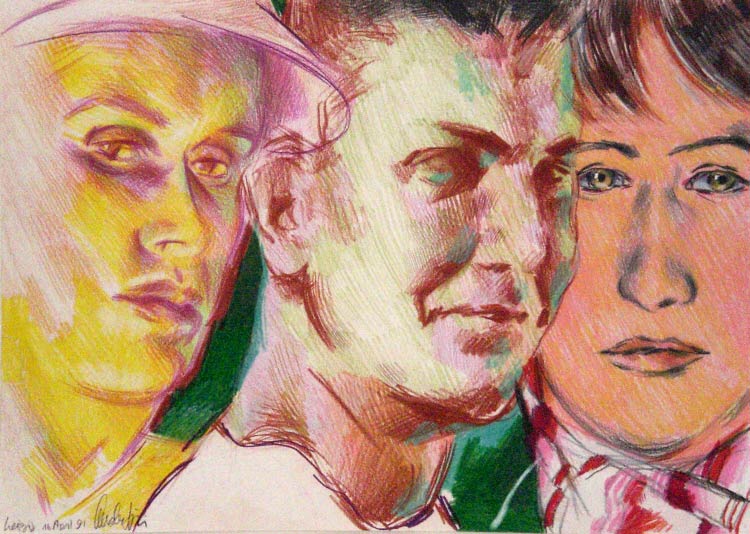
Through the media, such as the written press, TV and the cinema, a great number of people are permanently present in our lives, people we have never actually met.
Their faces are like icons, landscapes.
Their features have become independent through the photographic dissolution and its reconstruction and they have thereby attained hieroglyphical meaning.
The reproductions of these human beings belong firmly in the pictorial vocabulary of our civilisation.
These filtered people crowd our lives like old acquaintances and have replaced the Sacred Images.
We also can not avoid the waves of pictures of situations which confront us constantly with global themes of the highest importance as well as of the most perfect insignificance. One of the most striking examples of this is certainly CNN.
In 1957, Yves Klein gave us the most extreme solution to working within the two-dimensional field with his wonderfully unreproduceable blue monochromes (unreproduceable because of the amount of color pigments which no printing machine can spit out). Formally, this was the final consequence of Kasimir Malevitch's "White Square on White Ground" (1918) and the development of Piet Mondrian's abstractions of trees, which led this artist to his directional verticals and horizontals and plain color squares and rectangles.
The first other real non-figurative artist was undoubtedly Vassily Kandisky.
The question about what is modern or contemporary has to be asked again (e.g. a comparison between Piet Mondian's paintings of 1922 and the design on L'Oreal hairspray cans). It should also be observed closely and as free from judgment as possible what independent meaning the visual part of the media (photography, film, video, printing and copying techniques ...) and the optical side of computer technology really occupy in art and how deep a mutual correlation / interrelation / insemination can go.

The global commercialisation within record time of artists such as Keith Haring sets one thinking. The importance given to the recognizability of an artist's style, which requires the restriction of personal expression as a main quality, seems strange to me. It is especially surprising if one considers what a large stylistic as well as thematic variety Keith Haring has encompassed in his work, like any good artist. Particularly repugnant is the fact that his death, following a then "contemporary" illness, AIDS, has increased his market value even more rapidly … What is even more disgusting is the fact, that AIDS has lost its "fashionability" … I am absolutely against the idea of the "suffering artist". Vincent van Gogh was not a good painter because he cut off his ear (which, by the way, isn't totally true: he would have bled to death with an entirely hacked off ear shell), but because he painted good paintings. The "suffering artist" concept is tempting, but I find it impertinent. The way leading an artist to his end results is his very own, private and secret one. I do not think it is possible to reconstruct this path after the fact and from the outside. It is also interesting, that the History of Art quite often moves dangerously close along the lines of tabloid-mentality.
At this point, I would like to include a wonderful saying by Pablo Picasso:
"All documents of all times are wrong! They all reflect life through the 'eyes of the artist'. All ideas we possess about nature we have thanks to the artists [painters]. We see it through their eyes. This alone should make us suspicious ... You speak of 'objective reality'. What on earth is that: 'objective reality'? ... This very morning, while shaving, the following phrase has occured to me: 'objective reality' should be carefully folded up like a bed sheet, stored away and locked up in a cupboard, once and for all ..."

One has to ask again and again what kind of interrelations should be uncovered and investigated by art historians. Where exactly lies the difference between sensible categorizing and unquestioning commercial cataloguing?
Is it sufficient to give a name to works of similar make that these products become an art form, even if these products come from an entire movement of several creators and even if the works happen to be of high market value? One of the most embarassing chapters has certainly been "Naive Art".
Local and stylistic groupings of artists have unfortunately almost no meaning anymore. They are next to non-existent nowadays.
I am diametrically opposed to any art form which strives to be as unprofessional and as non-understandable as possible.
Stylistically, I myself am anchored in European painting. Nevertheless, the influence of stylistic elements coming from graphic and industrial design, as well as from printing techniques such as rastering, silk screening and color separation are also important to me. The use of possibilities of expression we know from filtering through the photographic eye are likewise essential.
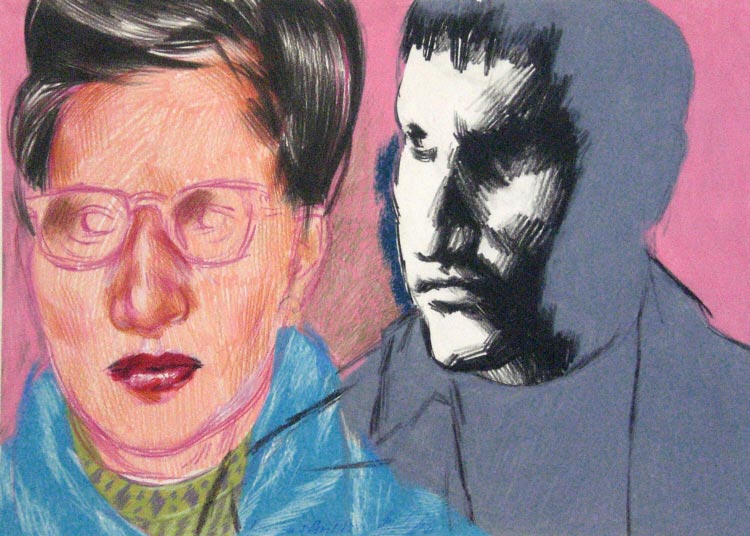
I try to respect the own life of each art work in progress as much as possible.
Through my subjective translation, the object chosen for an artistic representation obtains a new, independent and personal meaning.
These objects, rendered in a work of art, are signs. Signs of time, of our time and of the times … as well as signs of events, relationships, actions and activities, ... hopes ...
|
|
|
|
How to approach the essence of an object?
How to seize the correlation between several objects?
How to document the manner in which I, being the 'subject', the artist and the bearer of conciousness, perceive an object?
How to record the interactive relationship between object and subject (the artist as well as the model)?
How to depict the fields of tension between several particular subjects (between the artist and the model/s as well as between various models)?
How to approach the essence of a subject (model)?
|
|
|
|
At the beginning of my adult life, an encounter woke me up.
Reading Marcel Proust's "A la recherche du temps perdu" in its entirety opened new windows for me, through which I have since been able to look with sharpened near- and farsightedness. Courses of events in human society and views on a possible sense of life were shown to me in a way that I was able to comprehend. Expectations, openings and hopes – which I had lost at the end of my youth and that religious scripts and convictions could no longer give me – were returned to me.
The worst thing for me is the absence of hope.
Second to worst is any kind of religious fanatism, although I do respect any kind of different thinking.
|
|
|
|
The "perpetuum mobile et stabile" of primary elements is divided into single parts which are connected to each other in predetermined dimensions and in precisely defined and proportioned fields of tension, and they are united indivisably into reality.
Reality is partitioned into combinations.
These combinations I call 'objects' and, in the case of the human being, 'subjects'.
The proportions of the primary elements and their relationship towards each other determine the nature of the object / subject.
The objects and subjects are linked to each other in unconditional dependence.
The subject is the unique combination of the primary elements and the bearer of conciousness (the artist / the model / the spectator).
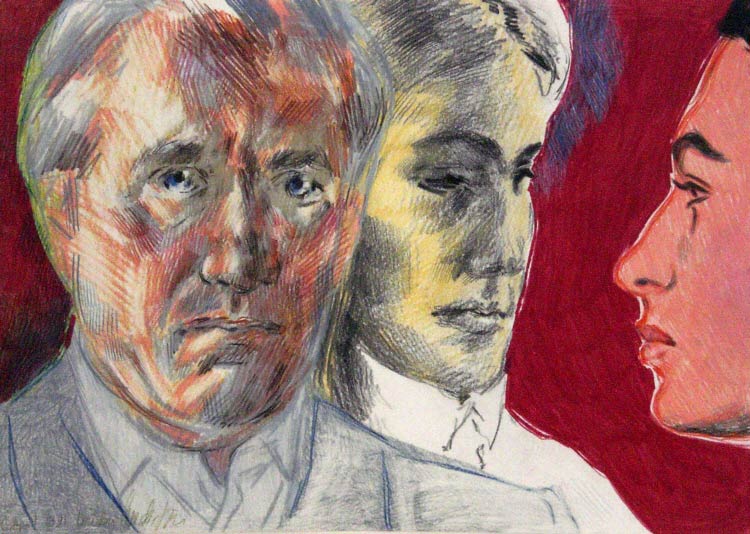
The sense of the subject's being is happiness.
The subject's (the artist's) duty is the creation of the work.
Work is the experience of the essence of happiness.
|
|
|
|
Four individual traits of a subject (an artist) make the creation of the work possible:
the senses enable the subject to record primary and additionally secondary (constructive) impressions;
memory allows the subject to store these primary and secondary (constructive) impressions;
the ability to complete (interpolation) allows the artist to fill in missing elements of a present object / subject (model) and to see the whole from its parts;
imagination allows the artist to recreate an absent object / subject (model) and thereby transform it into an ideal condition and state.
|
|
|
|
Existence is divided into periods.
During childhood, the subject (any human being) collects primary impressions.
The subject's adolescence begins with the awareness of his/her own existence.
The knowledge of the subject's own existence filters the absorption of primary impressions.
One of the most attractive characteristics of this period of life is an unfounded, unpredictable und uncalculating enthusiasm.
The subject's maturity begins with the realisation of his/her own being.
The knowledge of the subject's own essence finally prevents any further reception of primary impressions.
Secondary (constructive) impressions, built on primary impressions, lead to experiences ("Erlebnisse").
These experiences ("Erlebnisse") are the result of the overlapping in perfect unity of past (primary) and present (secondary) impressions.
Through the comparison of the past and present conditions of an object / subject (model), follows realisation and knowledge.
Realisation (conciousness) is the perception of the existence of the object (the outside world).
Knowledge (awareness) is the perception of the essence of the object.
The union of realisation and knowledge culminates in happiness.
The subject's (the artist's) coming of age begins with the creation of the work.
|
|
|
|
The power of will is the force which enables the subject (the artist) to extract an impression out of him/herself.
The act of creation means the translation of impressions into a visual form.
This is made possible through the extraction and transformation of primary impressions and then through comparison of these with the secondary (constructive) impressions.
Subjective instinct chooses the impressions according to their importance; talent and experience ("Erfahrung") supervise the reproduction.
The quality of the work is based on the honesty of the translation.
The representation is rooted in happiness resulting from realisation and knowledge.
The work is the overlap in perfect unity of the image of the object and the object itself, and the impression the object has made on the subject (the artist). This aim can only be reached by absolute submission of the subject to the object and its laws.
The work of art is a model of reality in the form of a translation of a subject (an artist).
The work is the means.
It enhances and strengthens the realisation of the senses in the subject (the receiver, the spectator).
The sense of existence is happiness.
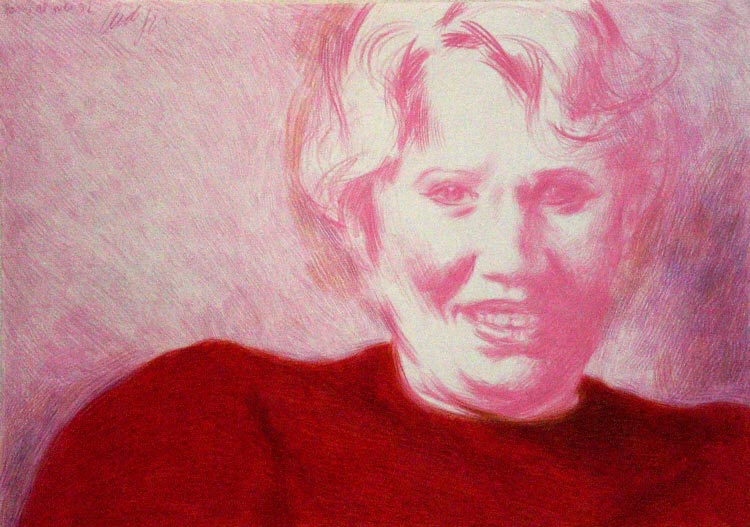
If the artist doesn't make use of the right to be perfectly free in his opinions and in creating his work, who else will? Freedom is thinking independently and the right to have one's own opinions. Tolerance is respecting a different opinion.
My artistic work in the visual field is on one hand a reflection of my very own impressions and experiences (also in the sense of Marcel Proust's explanation of human happiness as a result of an overlapping of a past impression with a present one). On the other hand, it is the result of a personalized rendition of my surroundings.
Of course, one question is asked immediately: do these visual translations of my inner self and these personal reflections of my surroundings have any higher meaning, if they are put in a larger context? I do not know. I can not judge this as I do not have any distance from my own self. This question hardly ever occupies my mind.
I am not an art architect who has an idea and then delegates the execution of this idea to others. The idea of the original, made by the artist's own hands, is very important to me.
To be particularly contemporary – or "modern" – doesn't interest me. As a child of my time, I am forcibly contemporary. There is no way to escape one's own time period. Take a historical movie from the 50's as an example: the film will tell you more about the 50's than you will learn about the French Revolution.

I find the idea of the "suffering artist" most apalling. Van Gogh was a good painter because he painted well, not because he pinched his little ear lobe.
If something visual demands a verbal explanation, the aim is already missed. Just think of a red traffic light: if you can't understand the "sign", you're dead.
Because – in addition to my work as an artist – I have also been performing for so many years as a professional classical opera singer, an art form which is probably the most "mixed media" art form imaginable, I am quickly suspicious of mixed art forms: too often the mixing of various media is used to cover up not mastering any one discipline.
Social criticism, shocking indecency and being brand new in and of itself do not make a visual statement into art. Looking back at thousands of years of art production, formal quality has always been on the very top of the list.
Following is a list of some concrete elements/tendencies/categories which I try to avoid in my artistic work, or at the very least, I try to minimize their use. Words/expressions that make me cringe: "decorative", "caricature", "fashionable", "trendy", "pseudo naive childish/child-like", "educative" (with a raised index finger), "illustrative" (from a children's book to cartoons), "pretty", "design", "gimmicks", "artsy-crafty", "psycho-therapeuric self-realization" and "as inaccessibly inscrutable as possible".
I'm not interested in producing art work that is market oriented or follows the guidelines of sales strategies. I'm not lusting after being hung in a museum either. To have a so-called "handwriting" which is as recognisable as possible, like a registered label or brand name as a sales tool, only bores me. And to reproduce the same recognisable piece of art over and over again only demonstrates an extremely flattened personality structure. To compare it with my enjoyment of food: I equally love breakfast, elevenses, lunch, 5 o'clock-tea and dinner plus an occasional midnight snack and all the individual courses of each of these meals as well. How could I, as an artist therefore, only be attracted to one single segment or form of expression? What does interest me is the subject matter and the visual quality with which that subject matter is transformed into a work of art. One of the elements I hope is present in all of my "better" work is a certain personal artistic sensitivity.
As a consequence, my work is extremely varied and non-linear, both thematically and in the development of time.
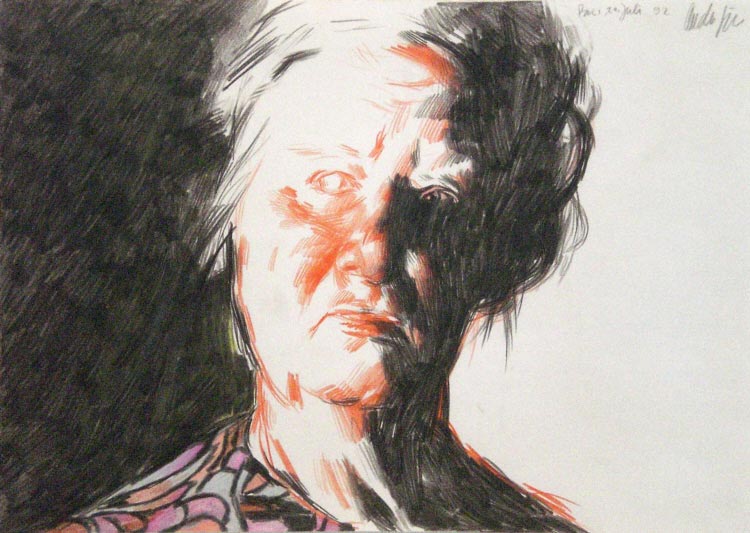
And how boring it is when for over 80 years only brand new stuff is supposed to be "Art", something or someone is right at "The Cutting Edge" of the "Art Front" and every new art work is an invention. Wooow. It reminds me a teeny little bit of "The Emperor's New Clothes". Just how many more vocabularies will have to be invented in languages which nobody speaks, very few understand and hardly anybody is willing to learn? What about: to express oneself in a language which is universally understood and on top of this, make a statement which makes sense?
Wasn't "Art" supposed to be a "Universal Language"? Since when has it become the secret access code to some obscure select elite club? And why?
To invent something new in and of itself is not a guarantee of quality. In my esteem, newness is only valid if it has emerged out of the search for an adequate transformation of a well defined, concrete subject or theme.
This urge that the contents of and the thoughts behind most of these "Cutting Edge" artistic statements that are of very little general interest, is an extremely strange phenomenon: how many more variations of squares & rectangles do we have to endure? How many video installations of endlessly repeated sequences with pictures of hairy armpits, slightly out of focus? How many seemingly unorganized piles of stones and rocks and rancid margarine heaps, placed on a rusty piece of metal in the corner of a room? How many more times will the "White Canvas" be reinvented (Kasimir Malevich's 1918 "White Square on White Ground")? How many more times are we supposed to get upset about some pseudo pornographic pictures? And let's not forget the funny little stick figurines with rattling uzi machine guns and cut off body parts, all drowned in blood, accompanied by MangaTittyGirlies dressed in flowered pyjamas? Yawn. To piss on the picture of a president of state? Ha-ha-ha.
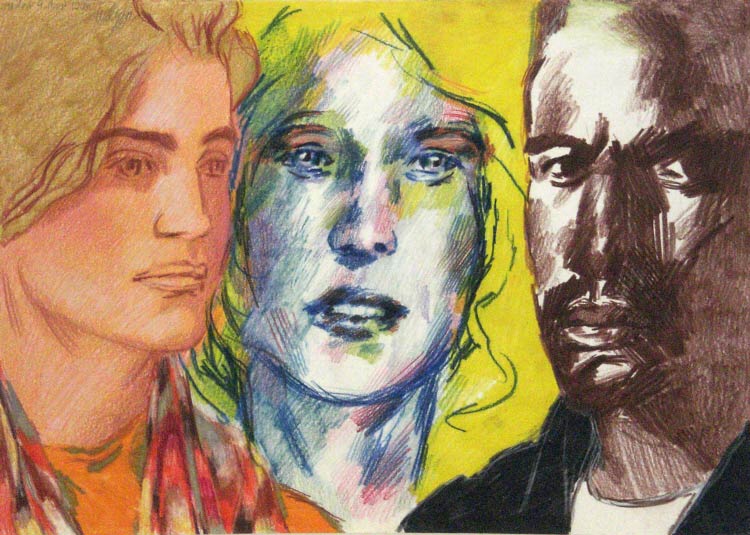
The production of high voltage harmony, balance and beauty is the essence of the creative process for me, not violence and/or destruction. Which is not to be mixed up with the picture of violence and/or destruction. Once again: Goya's dreadful pictures of war are not artistically high ranking because they depict something particularly gruesome, but because they are formally executed in super top world class quality.
Simplification – a clarification of sorts – is an important element in every artistic transformation. The overflow of optical information has to be filtered and worked into recognizable signs. The difficulty hereby is, not to flatten the statement the artist wants to make or to become vulgarly common. The artist then begins the search for as large and as varied a richness as possible, within the boundaries set by the artist himself.
My work is the echo of every day life, the ordinary and the normal. But again: it is a mirror of my own "View from the Center", it is not the reality of another person at another place at another time.
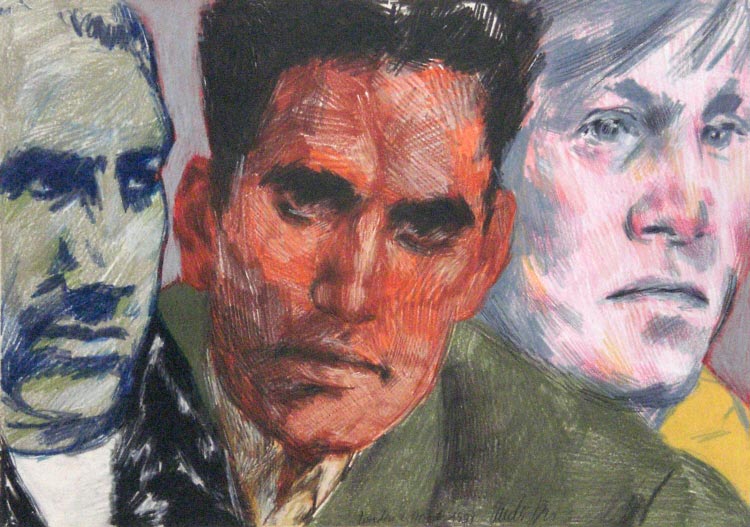
|
|










